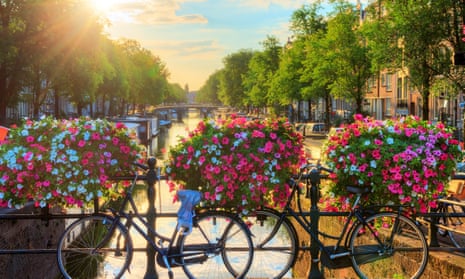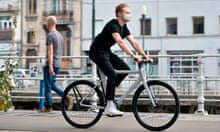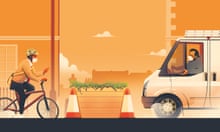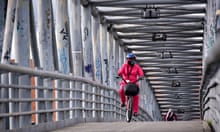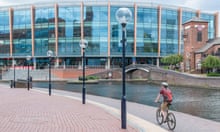Amsterdam prides itself on being one of the world’s most cyclist-friendly cities. But even the Dutch capital has its limits.
The municipality has complained that the views of some of the most beautiful canals are being blighted while pedestrians are being forced into the street by the accumulation of bikes being tied to bridge railings.
As a result, the council has decided that wooden plant and flower baskets should be placed on the busiest canal bridges in an attempt to persuade cyclists to find other parking spots.
“Due to the large number of bicycles parked at the bridge railings, pedestrians no longer fit on the narrow sidewalks and walk on the roadway”, a spokesman said. “This creates unsafe situations.”
The baskets will be maintained by visitors to drop-in centres frequented by the city’s homeless community.
To create extra space for the cyclists away from the bridges, car parking spots will also make way for more bike stands by the canals.
Amsterdam has more bikes than people with 767km (478 miles) of cycle lanes. The coronavirus pandemic has further promoted a trend away from the car and public transport.
A report from the Dutch knowledge institute for mobility policy this month found that the average distance covered by bike had increased from 3.4km in September 2019 to 4.1km in July of this year.
More than a third (37%) of those avoiding public transport because of Covid-19 were jumping on their bicycle. About half of those said they would continue using the bike more when coronavirus restrictions were finally lifted.
The massing of cycles on the city’s bridges is not the only unintended consequence. The travellers association, the Algemene Nederlandse Wielrijders-Bond (ANWB), has called for an improvement of safety standards around crowded Dutch bike lanes.
Frits van Bruggen, ANWB’s director, told the NL Times: “Before the coronavirus crisis, we already had full cycle paths and more and more two-wheelers at different speeds.
“E-bikes, e-scooters, bicycles, cargo bikes also in electric, racing bikes, and the e-scooter. Not all of them can ride side by side. I am 100% sure that we will have even more victims because we cycle and take the car more because we no longer dare to use public transport.”
